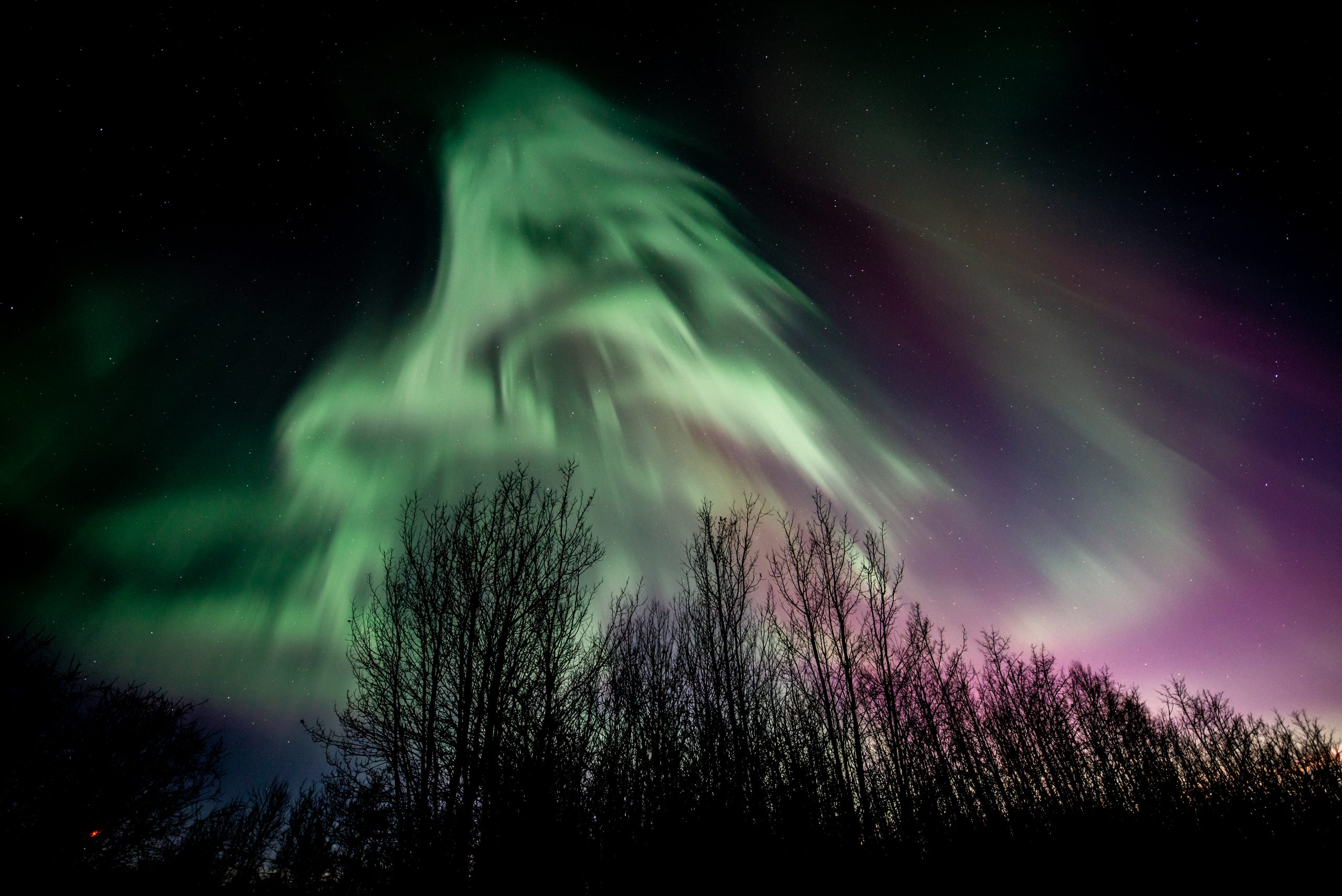Albertans treated to spectacular northern lights, with more on the way
Posted February 28, 2023 8:34 am.
Last Updated February 28, 2023 11:23 am.
Northern lights lit up the Alberta sky Sunday night and into early Monday morning. When can the province expect to see more solar activity?
They say Saskatchewan is the Land of the Living Skies, but night owls in Alberta were treated with the spectacular display of northern lights that stretched across the heavens.
“The sky was just all ablaze with fire so I grabbed my gear and away I went,” said photographer Arthur Raham.
Northern lights are caused by high-energy particles that emerge from the sun and move through space until they hit the Earth’s atmosphere.
“These charged particles interact with the Earth’s magnetic field, and stream down onto the Earth’s magnetic poles, exciting gases in the Earth’s atmosphere,” said Frank Florian, the senior manager of planetarium and space sciences at Telus World of Science. “They give these wonderful lights of the northern lights.
“It happens in 11-year cycles and we are just coming up on it now. The maximum should be taking place sometime in 2025, so we got a couple years before we get up the solar maximum. But right now we have this lead-up to it, so the sun is becoming more and more active, which means on any given night over the next little while, keep looking up because you might see more and more northern light activity.”
When I arrived at Elk Island there was a bit of purple visible, then it exploded!! Purples, greens & reds in the corona overhead!! #nosleep #yeg #aurora #photography #canon #alberta pic.twitter.com/jIOHgZHsbi
— Keith Moore (@kmoorephotos) February 27, 2023
This light show was seen as far as the United Kingdom, where a Finnair pilot made a 360-degree turn, giving passengers onboard a chance to see the lights.
“It went through many stages, it was very active,” said Raham. “You hardly knew where to point the camera because it was pretty much all over the sky.”
The result was greenish and purplish streaks in Alberta’s night sky. Florian explains why an the northern lights can take on many different colours.
“Up in the upper atmosphere we have atomic oxygen,” he said. “When that actually gets hit by these particles, primarily electrons, they excite the gases to give off red lights. As you get further down into your atmosphere you basically get molecular oxygen. When they get hit by an electron they basically give off the beautiful greens that we see in the northern lights. And if you get down even further in the atmosphere, we have more of the nitrogen gas, we find those particles excite it and give off the reds and blue light.
“Most of the stuff that we see here in Alberta is just kind of a greenish glow, but when the sun burps and puts out all this material, that’s when you get these spectacular red auroras and they’re just incredible to view and that’s what we had this morning.”
Even those living in urban areas with light pollution were able to see the sky dance Sunday night. But Raham says it’s best to leave the city lights behind for a clear view.
“If it’s easier to go west, great. If it’s easier to go east or north, that’s best,” he said. “You don’t want to go south because then you’re putting the light pollution of the city itself between you and the northern sky which you want to avoid.”
While there’s some beauty behind the northern lights, they could affect the power grid and create an outage – similar to when Quebec suffered an electrical power blackout caused by a solar storm in 1989.
“If there’s a really, really big storm, a lot of the systems we have just don’t have enough protection for it, and they could do the same thing that happened in 1989 by taking out a whole power grid,” said Florian. “It can happen and it probably will happen again.”
A website created by the University of Alberta tracks the geomagnetic energy in the Edmonton area and alerts users when there is a high chance of seeing another round of northern lights.
“And one thing to note too, we’re getting closer and closer to the Spring Equinox on March 21 and aurora activity is more predominant near the equinoxes, so in addition to with the sun’s doing, as we get closer to the equinox, we might see even more northern light activity here,” said Florian.









